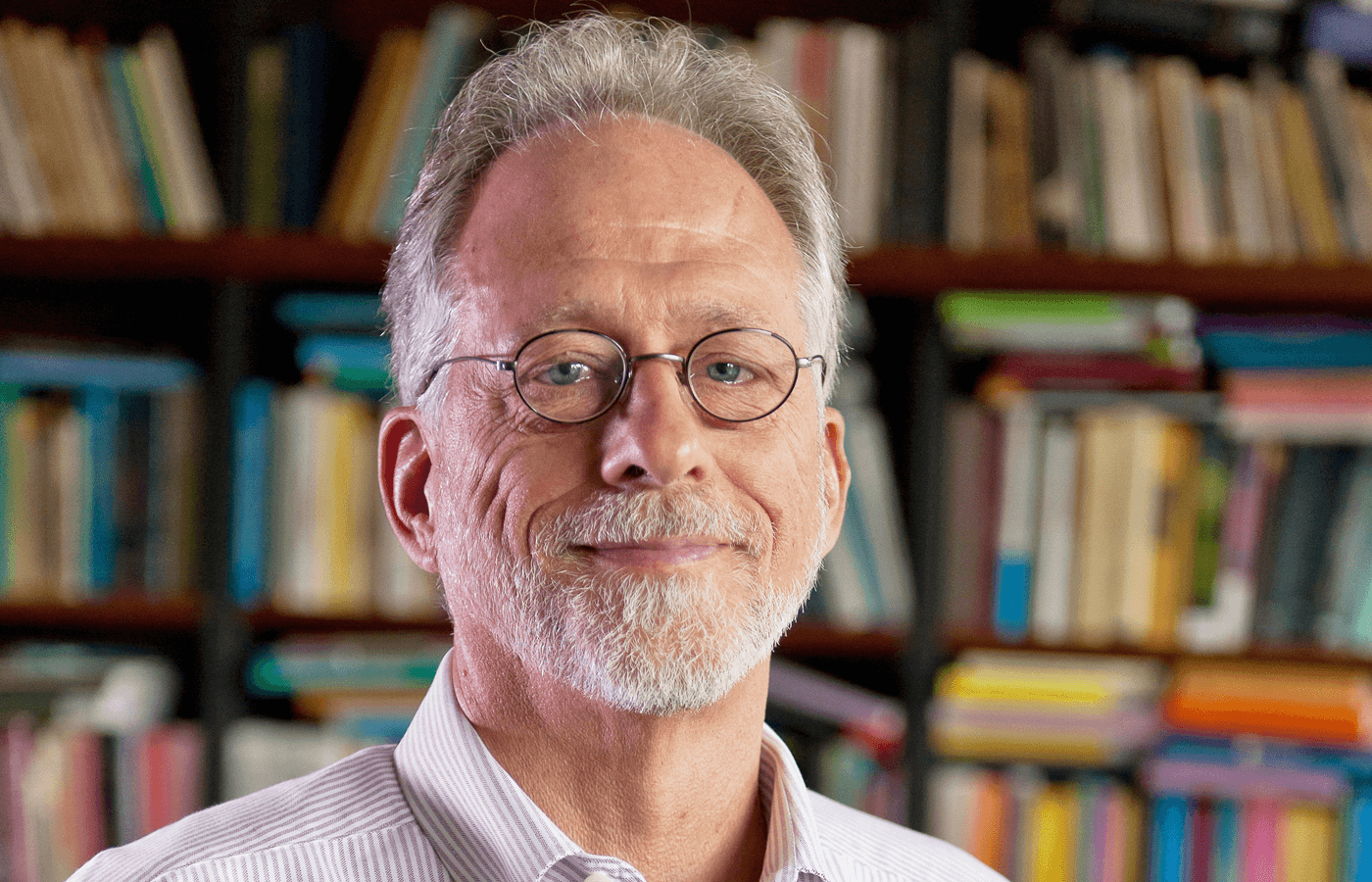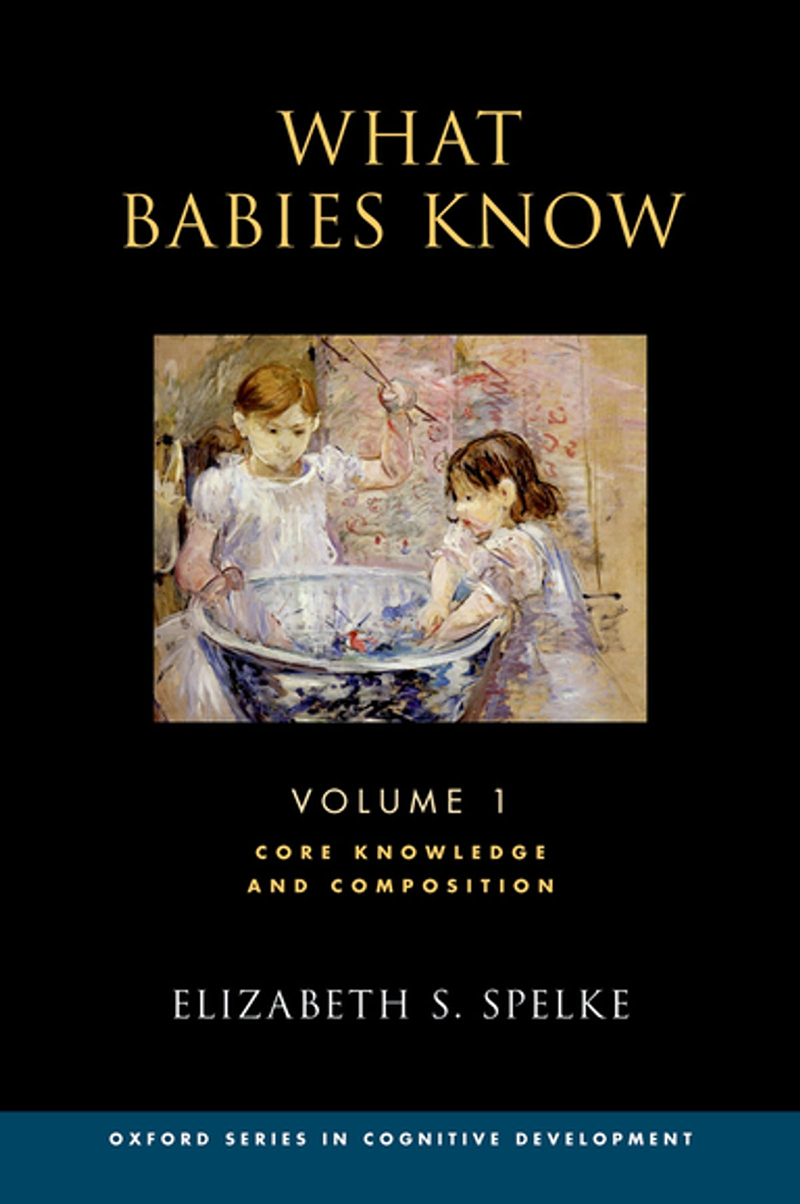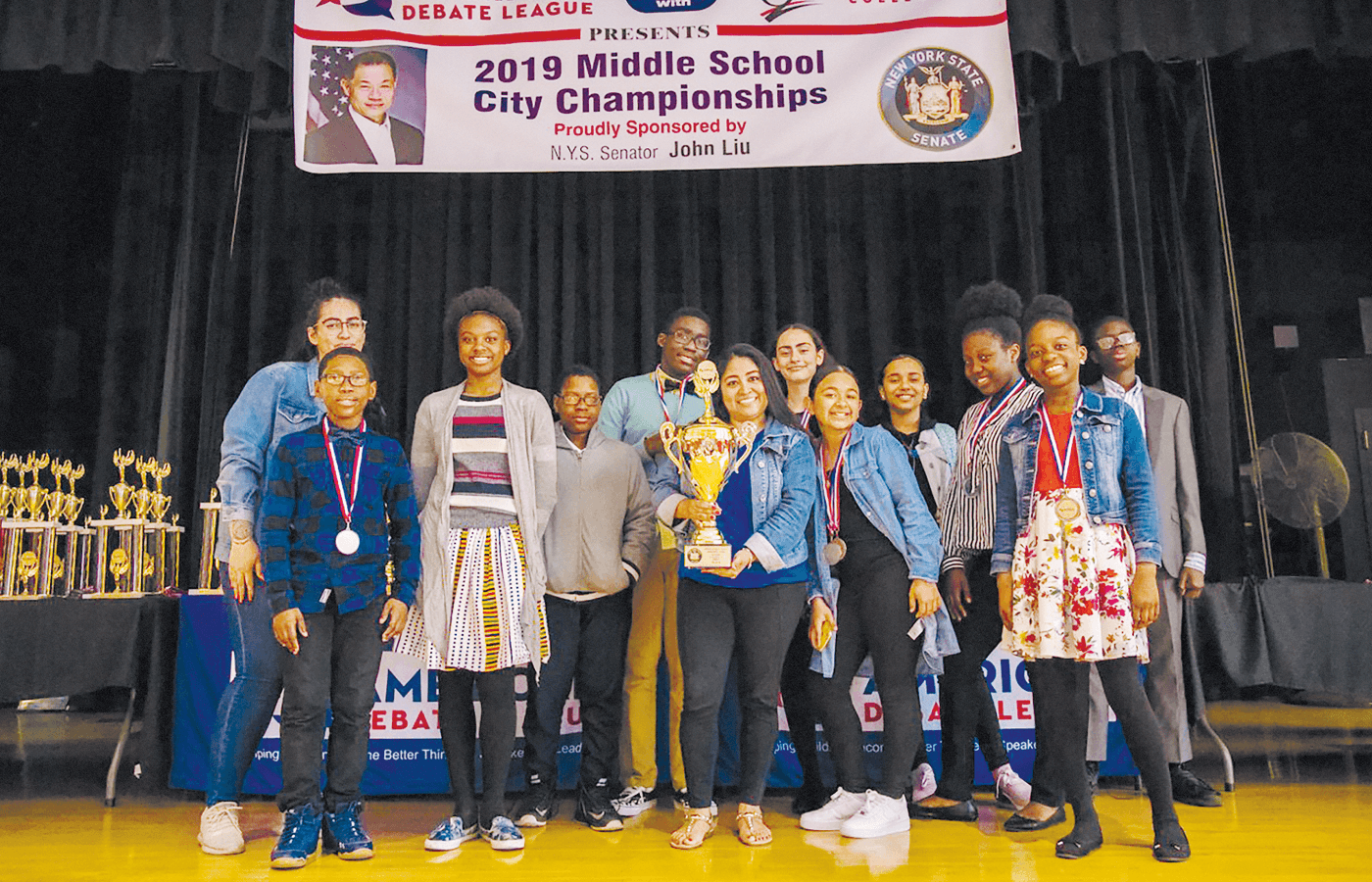
Infants are prepared to learn shared cultural knowledge from nonverbal communicative demonstrations addressed to them at a remarkably early age.
—Katalin Egyed, Ildikó Király, and György Gergely, “Communicating Shared Knowledge in Infancy” (2013)
The ability to create common conceptual ground—joint attention, shared experience, common cultural knowledge—is an absolutely critical dimension of all human communication, including linguistic communication with all of its he’s, she’s, and it’s.
—Michael Tomasello, Origins of Human Communication (2008)
These recent findings about the trans-verbal underpinnings of speech confirm past work by me and others on the vital role that shared background knowledge plays in linguistic communication. That work can be summarized as follows: to disambiguate and amplify what a linguistic utterance means, something beyond language conventions and potential word meanings is needed. One also needs to make correct guesses about the speaker’s intended meaning—especially regarding the “genre” or “schema” of the utterance: Is this a scolding? An invitation to play a game? Is this telling me the name of an object? Unstated intentions need to be guessed to interpret all human speech, whether oral or written.
Humans alone among the species employ articulate language. Our nearest relatives, bonobos and chimpanzees, cannot quite make that leap. The evolutionary psychologist Michael Tomasello has spent years studying the characteristics of apes and humans at the Max Planck Institute. In a series of books and articles, he has revealed that a key to our unique facility for language is our empathic ability, starting in infancy, to gauge another’s intended meaning. From “shared intentionality,” as Tomasello names it, we move to shared word meanings, and we ratchet upward from there.
This essay deals with two aspects of the ratchet effect Tomasello identifies: the young human’s ratcheting gains in knowledge and language year by year, and the more general ratcheting gains by the wider tribe or nation in preserving and increasing shared knowledge. Our species alone can ratchet up progressively within a culture because we alone possess the pre-linguistic gift of accurate intention guessing. That guessing talent makes us articulate and social. It makes us human.
Accurate guesses are just as essential to a cradled infant as they are to a learned professor of literature or jurisprudence. A grammar instinct may or may not be inborn. That is still disputed. But the intended meaning behind an utterance must always be inferred even when the utterance is ungrammatical. Everybody, including infants, must guess intended meanings.
I’ve written a lot on this subject over the years, all of it in ignorance of professor Tomasello’s recent work. I hope others will find his insights into the “ratchet effect” as useful as I have.

An Illuminating Take on Schooling
When evolutionary psychologists talk about the ratchet effect in human evolution, it’s good to know what kind of ratchet they mean. It’s not the horizontal circular kind that screws in screws or unscrews jars. With those, your hand can move back and forth in short strokes, and the object under tension will turn just one way. The evolutionists’ metaphor envisions the kind of ratchet that mountain climbers place on their ropes, enabling them to climb up, while preventing them from slipping down. The climber’s upward progress is secure. It ratchets only upward.
Evolutionary psychologists tell us that K–12 schools, at their best, act as cultural ratchets perpetuating the shared knowledge of their society. That’s the thousand-year perspective of A Natural History of Human Thinking, by Tomasello, who says the following about the education of young humans:
Cumulative cultural evolution takes place when the inventions in a cultural group are passed on to the young with such fidelity that they remain stable in the group until a new and improved invention comes along (the so-called ratchet effect). Modern humans had a stronger ratchet than early humans and apes because they had—in addition to powerful skills of imitation—proclivities both to teach things to others and also to conform to others when they themselves were being taught. And so it is, with this wave of group-mindedness and conformity, that we get the possibility of cultural groups creating and constantly improving their own cognitive artifacts—from procedures for whale hunting to procedures for solving differential equations.
But notice the very un-American tone to the principle of progress in Tomasello’s description of collective advancement: “this wave of group-mindedness and conformity” is key, he says. I was taught in my typical American boyhood that “[w]hoso would be a man must be a non-conformist.” That’s Ralph Waldo Emerson. That’s American individualism. That’s Romanticism.

Evolutionists vs. Romanticism
Tomasello’s allusion to “group-mindedness and conformity” also does not fit well with the child-centered, constructivist conception of elementary education that now prevails in our schools. The child-centered theory encourages children to develop naturally according to their inborn paths. Child-centered theorists say that children from kindergarten on should follow their inborn, individual, developmental plan. The educational psychologist Jean Piaget put it this way:
Children should be able to do their own experimenting and their own research. Teachers, of course, can guide them by providing appropriate materials, but the essential thing is that, in order for a child to understand something, he must construct it himself, he must re-invent it.
But decades—centuries even—of ratcheted cultural advance cannot be “constructed” ex nihilo by a young child. As Tomasello and his colleague Cathal O’Madagain state:
What is inherited is the product of several generations of innovation, and often goes beyond what any generation could have produced on its own. The cultural ratchet can be seen as a kind of collective pooling of knowledge and cognitive resources in the social group, as individual innovations are adopted and built on by everyone else.
In the 1940s, in support of child-centered education, including the child’s choice of what to study so long as the content is pitched at the appropriate level, we came to view reading as a general skill with defined levels of expertise that apply across content areas. That view is incorrect. Reading and speech comprehension each depend upon shared, unstated knowledge and on correctly gauged intended meanings. Our error about the existence of an all-purpose reading level has led to alarming declines in our reading test scores—and in our unity as a nation, which depends, like our reading scores, on shared background knowledge. When our shared knowledge declined, so did both our reading scores and our cohesion.
Why Verbal SAT Scores became Un-ratcheted

America’s reading ratchet slipped badly several decades ago—in the 1960s and 70s—as indicated by a two-decade decline of scores on the verbal SAT. The causes of the slide lay in the decline of shared knowledge in elementary and middle school classrooms during the 1950s and 60s. Detailed research has contradicted the excuse that the SAT scores fell only because a larger and more diverse group of students started taking the test. “Despite these compositional changes,” psychometrician Dan Koretz concluded in 1992, “the real decline in college admissions test scores during the 1960s and 1970s was considerable.” And subsequent data from both the SAT and the National Assessment of Educational Progress confirms that our reading scores have yet to recover.
During the two decades before the slump in SAT scores, the SAT-takers-to-be were experiencing changes in the furniture, the seating arrangements, and the curriculum of their elementary schools. Whole-class instruction changed to individual and small-group instruction. Sage-on-the-stage teaching changed to guide-on-the-side teaching. The reading texts changed from anthologies that were discussed by the whole class to child-selected “leveled” booklets from the classroom library. We thus individualized a skill that is inherently social. Literacy is based upon shared background knowledge between writer and reader. That technical truth was not widely known in our classrooms of the 1940s and 1950s. In any case, it was ignored.
It was replaced by two spurious ideas: (1) that the readability of a text for a student can be determined apart from our knowing anything about the student’s background knowledge; and (2) that the text-relevant knowledge of the student could be estimated by her score on a general reading test. Both assumptions are incorrect. They were adopted ad hoc to foster a child-centered individualized approach to the choice of reading from classroom libraries.
The culprit in the shift from communal school readings in shared anthologies to individual readings from classroom libraries was child-centered Romanticism. Historians of the nineteenth century’s Romantic movement can readily explain why. After our Enlightenment founding, some of our top thinkers, like Emerson and John Dewey, urged us to follow nature in our schooling. Nature, they believed, would benevolently oversee the child’s natural physical and mental “development.” The gradual effect of this all-conquering Romanticism on American educational thought has been profound. Dewey once conceded that the early nineteenth-century Romantic philosopher, Georg Hegel, had left “a permanent deposit” in his mind.
Hegel saw human history as a narrative of ongoing progress, a theodicy, despite the existence of evil. Such confidence explains why the child-centered approach came to be known as “progressive education.” Under divine guidance, the child’s instincts and preferences in choosing books of personal interest from the classroom library would naturally and securely advance the child’s reading ability. This faith in the individual’s ability to progress by means of natural, child-centered education is evident in Dewey’s closing comment in a 1940s Time magazine newsreel called “The March of Time” (a confident Hegelian title). Dewey ended the episode as follows: “The world is moving at a tremendous rate, no one knows where. We must prepare our children not for the world of the past, not for our world, but for their world.”

Implicitly, God and His agent Nature oversaw that forward march. Such confident Romanticism viewed human cognitive “development” as analogous to the growth of a plant. The Romantic poet William Wordsworth wrote a long autobiographical poem titled The Prelude or Growth of a Poet’s Mind. He meant it when he said “growth”; an early line reads, “Fair seedtime had my soul.” Our current use of the terms “development” and “growth” to describe early education are remnants of the confident Romanticism that began taking over our educational thinking in the early 20th century. The English essayist and poet T. E. Hulme called Romanticism “spilt religion.” That’s why it’s so hard to combat.
Current evolutionary psychologists use a different noun than “development,” and they want you to notice it. They use “ontogeny.” It simply means “the life-course of an individual.” Evolutionary psychologists stress that the communal shared knowledge conveyed by our schools has been invented by us. They use the noun “culture,” not “nature.” Indeed, they stress that our cultural artifacts and practices may be hostile to the natural world. One evolutionist, Harvard’s Joseph Henrich, describes the consequences of our ancestors’ activities this way:
The disappearance of many megafaunal species eerily coincides with the arrival of humans on different continents and large islands. For example, before we showed up in Australia around 60,000 years ago, the continent was home to a menagerie of large animals, including two-ton wombats, immense meat-eating lizards, and leopard-sized marsupial lions. These, along with 55 other megafaunal species, went extinct in the wake of our arrival, resulting in the loss of 88% of Australia’s big vertebrates.
Such observations are antidotes to the Romantic assumption that the natural educational “development” of the child is overseen by divine forces. Evolutionists stress the diversity of children worldwide. They conceive of human education as a cultural process. They regard the shared knowledge and shared print language of schooling as human-made ratchets designed to preserve social and cognitive gains and to devise new improvements of them.
In holding that view, today’s evolutionists are in tune with educational leaders of our early republic like Benjamin Franklin and Noah Webster, who followed the lead of our founding philosopher, the Englishman John Locke. While Locke’s political theories guided Thomas Jefferson in writing our Declaration of Independence, his educational theory proposed that a human baby’s mind starts not as a seedling poised to “develop” but as a “blank slate” ready to be written upon. That’s largely right, as Harvard psychologist Elizabeth Spelke explains in her authoritative new book What Babies Know. She shows that the baby’s inborn “core knowledge” is vague and abstract—a characteristic that enables a society’s caregivers to write upon the child’s “slate” pretty much whatever shared knowledge the society’s elders have devised.
Current evolutionary and cognitive science, then, is more classic than Romantic. It regards human culture and education as human-made accommodations to local exigencies rather than as an inherent natural unfolding. Local conditions are varied; hence, human cultures are varied. Our social inventiveness, supported by our ratcheted social knowledge, enables human schools to help foster human flourishing across the globe—not through natural development but through highly varied cultural inventiveness.
EdNext in your inbox
Sign up for the EdNext Weekly newsletter, and stay up to date with the Daily Digest, delivered straight to your inbox.
The Validity of the Shared-Knowledge, Cultural Ratchet Concept
Evidence for the non-developmental, cultural, shared-knowledge character of human schooling has also been growing within the field of education. This is most concretely manifested in a 2022 experiment involving some 3,000 2nd graders conducted by James Kim of Harvard. He and his colleagues demonstrated that specific background knowledge, shared by all the children, significantly raised their reading and learning ability.
The experimental group in Kim’s study experienced sustained teaching of the same topic, whereas the control group experienced our normal read-your-book-from-the-helter-skelter-classroom-library approach based on the idea that “reading is a general skill.” So, in effect, Kim’s experiment compared two teaching modes and two theories: The shared knowledge theory of the old anthologies versus the child-centered, constructivist scheme of choosing your own story, so long as it is just above your reading level.
The results show that sustained, thematic-content instruction helps elementary-grade students transfer their past knowledge to other lessons about related topics in science and social studies. This could be rephrased to say that the experimental group possessed relevant shared knowledge (Tomasello’s “collective intentionality”) that helped them learn the new topic, whereas the control group did not possess that ratchet tool.
A second major study, led by David Grissmer of the University of Virginia and first published in this journal (see “How Building Knowledge Boosts Literacy and Learning,” research, Spring 2024), followed more than 2,300 students who had applied to one of nine oversubscribed shared-knowledge charter schools in and around Denver. The nearly 700 students who won seats at the schools via a lottery were compared to students who applied but attended other schools. Robert Pondiscio of the Thomas B. Fordham Foundation described the results as follows:
The cumulative long-term gain from kindergarten to sixth grade for the shared-knowledge students was approximately 16 percentile points. Grissmer and his co-authors put this into sharp relief by noting that if we could collectively raise the reading scores of America’s fourth graders by the same amount as the shared-knowledge students in the study, the U.S. would rank among the top five countries on earth in reading achievement [instead of 25th]. At the one low-income school in the study, the gains were large enough to eliminate altogether the achievement gap associated with income. Eliminate it!
I omit the name of the specific shared-knowledge program in place in these schools to avoid any implication that it has unique power. Any well-planned, cumulative, shared-content curriculum would work as well. Its effectiveness was achieved by the year-to-year ratcheting effect of grade-by-grade shared knowledge—as in the Kim study.

Let’s Start Ratcheting
Besides the general nationwide ratcheting function of the human school in forming communicative citizens, the ratcheting principle is also needed to form communicative pupils from grade to grade—as the Kim and Grissmer studies confirm. The old-fashioned shared-knowledge classroom is gradually coming to be understood as the latest thing.
Advocates of child-centered schooling have at times complained that such a shared-knowledge curriculum is socially and politically “conservative.” But conservatism in language across age groups is in fact socially egalitarian and intellectually progressive. It places everybody on the same verbal and social footing—old and young, rich and poor. It fosters a more competent society. The shared background knowledge needed to read general-audience books in the library and to communicate with fellow citizens is the education needed to promote equality and unity and progress in a modern society. It doesn’t happen naturally.
Much of what Americans need to share was indeed conserved—ratcheted—by prior generations. Our spelling continues pretty much the same as it was in the 18th Century. Early in that century, Alexander Pope made this mistaken prediction about language:
No longer now that golden age appears,
When patriarch wits surviv’d a thousand years:
Now length of Fame (our second life) is lost,
And bare threescore is all ev’n that can boast;
Our sons their fathers’ failing language see,
And such as Chaucer is, shall Dryden be.
Nope, Pope. We can still read Dryden’s writings and your own. Your poems were written a lot longer ago than threescore years. Chaucer is another matter. He came before democracy and the printing press. Democracy and literacy depend upon conserving and ratcheting innovations like the printing press, the common school, and the standardization of spelling, grammar, and vocabulary. They made our print language stable. We can still read Pope and our Declaration of Independence. Intergenerational literacy is here to stay—but only if our schools abandon their individualistic child-centered approach to the teaching of reading.
Teaching everybody the same things in the early grades in an interesting and engaging way has proved to be the road to high literacy and equality for all. It is the sole demonstrated route to high literacy and social justice. The shared-knowledge approach that leads to high reading scores is a social and economic fairness ratchet for individuals as well as for modern society as a whole.
I’ll close with an illustration of that egalitarian effect. The social fairness ratchet is powerfully at work in a set of charter schools of the South Bronx, the poorest section of New York City, that have embraced the importance of shared knowledge. Jeff Litt, the hero of my story, has recently retired. A quarter century ago, he was persuaded by the idea of shared knowledge. He transformed his traditional public school. His pupils and their parents grew enthusiastic. Word spread. Time passed. Jeff was made superintendent of seven public charter schools in the South Bronx in buildings bought by Carl Icahn.
Litt’s seven K–8 shared-knowledge schools have become so popular among South Bronx parents that twenty-five thousand prospective kindergartners apply each year for some two hundred kindergarten places. Eighty-four percent of parents in Jeff’s schools are below the poverty line. Ninety-eight percent are Black or Hispanic.
By the time these pupils reach grade 8, virtually every graduate is accepted by a selective high school. From high school they go on to college and get good jobs. That partly explains the rush to Jeff’s lottery, and the widespread lament for the 99 percent who miss out. Their disappointment says that they would like there to be more South Bronx schools that abandon the slogans of constructivism and teach a coherent, cumulative, shared-knowledge curriculum.
Jeff’s students come to love a sage on the stage rather than a guide on the side. They want to learn things that make them just as smart as well-off kids. The ratcheted shared knowledge that has been gained by the graduates of Jeff’s schools has enabled those poverty-constrained kindergartners to ratchet their shared knowledge grade by grade up through middle-school graduation. My favorite photo from the school shows Jeff’s middle-schoolers winning top prizes in a New York City-wide debate contest: This picture paints the 3,000 words of this essay.

E. D. Hirsch Jr. is founder and chairman of the Core Knowledge Foundation and professor emeritus of education and humanities at the University of Virginia. The content of this essay is adapted from his forthcoming book The Ratchet Effect: Shared Knowledge, Shared Values.
This article appeared in the Fall 2024 issue of Education Next. Suggested citation format:
Hirsch, E.D. (2024). Shared Knowledge and the Ratchet Effect: Child-centered individualism started the slide in American education. A recommitment to shared knowledge can ratchet it up again. Education Next, 24(4), 8-15.


